|
|
Editorial
Scientific opportunities
In addition to the regular observing proposals, ESO offers other ways to enhance the scientific opportunities from its facilities and their data. Examples in this Newsletter are the announcements of the call for VIMOS Public Spectroscopic Surveys, the first release of KMOS Science Verification data, the release of VISTA public survey data and some improvements to APEX data reductions and transfer.
This combination of the promise of future large coherent data sets from VIMOS, data from the VLT’s newest instrument, KMOS, and the data product collections from the ongoing imaging surveys are all indications of the ways ESO provides observational capabilities to its community beyond the classical single project time allocations. All data come together in the ESO archive, where they are available for new and different applications beyond the original science goals, including even improved data analysis beyond that published by the original proposers. The multi-wavelength research of many projects is strongly based on data from archives.
Bruno Leibundgut
ESO Director for Science
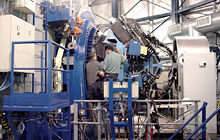
|
19 July 2013: A call for letters of intent for VIMOS Public Spectroscopic Surveys has been issued. A public spectroscopic survey constitutes a commitment to a massive observing programme with up to 300 (visitor mode) nights devoted to answering a major scientific question. Fully reduced data must be made publicly available within a defined time period. Letters of intent for VIMOS public ...
|
| Read more |
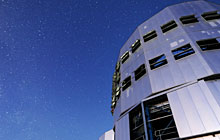
|
19 July 2013: The 92nd Observing Programmes Committee met on 21–24 May 2013 and recommended six new Large Programmes (two at the ESO 3.6-metre telescope, one at NTT + VLT UT1, one on VLT UT3 and two at APEX). A total of 1092 (8-hour equivalent) nights of visitor and service mode observations on VLT, VISTA and VST, the 3.6-metre, NTT and APEX have ...
|
| Read more |
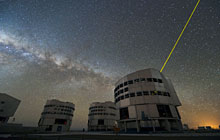
|
19 July 2013: The Period 92 Phase 2 deadline for the Service Mode observations is Thursday, 8 August 2013 at 12:00 CET. The guidelines for the preparation and submission of the observing material are available here. All P92 users preparing observations for instruments located on Paranal must use the latest version of P2PP (3.3.3) for compatibility reasons with the observation block ...
|
| Read more |
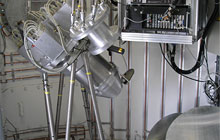
|
19 July 2013: With wobbler on-off mode, the 870 micron Large Bolometer Camera (LABOCA) on APEX can obtain photometry of point sources with accurately known positions more efficiently than in the usual mapping mode. The data obtained with on-off mode can be reduced with the Bolometer Analysis (BoA) software. A new guide providing a step-by-step description of how to reduce ...
|
| Read more |
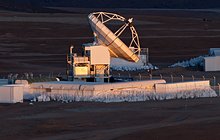
|
19 July 2013: As of April 2013, upgrades in network, data transfer software and archive software have enabled a significant reduction in the time it takes for an APEX observation to be available to users. Over the period since October 2012 this time has been cut by more than two-thirds, and now stands at close to 48 hours, enabling PIs to provide ...
|
| Read more |
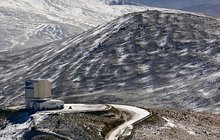
|
19 July 2013: New data products resulting from the VISTA public surveys are now available via the Phase 3 query interface from the Science Archive Facility. The current release of data from the VVV, VHS, VIKING, and VMC surveys (6.2 TB) covers mostly the period from October 2010 to September 2011 and consists of astrometrically and photometrically calibrated mosaiced and ...
|
| Read more |
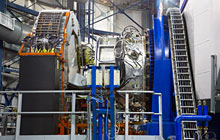
|
19 July 2013: The KMOS Science Verification (SV) programme consists of 20 proposals covering topics from exoplanets to distant galaxies. The first set of SV observations (SV1) took place during 24–30 June 2013. SV observations are performed in Service Mode by a dedicated team and the resulting raw data are immediately accessible to the whole community via the Science Archive ...
|
| Read more |
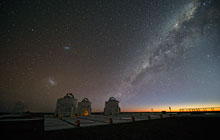
|
19 July 2013: Staff vacancies for the senior position of Director for Science, based in Garching, and for an operations astronomer at Paranal to support VLTI have been opened. The deadlines are 8 September and 31 August 2013, respectively. ESO Fellowships are also open for application with a deadline of 15 October 2013. Full details can be found on the ESO Recruitment ...
|
| Read more |
Upcoming ESO or ESO-Related Workshops
- SCIENCE OPERATIONS 2013: Working Together in Support of Science
ESA/ESO Conference at ESAC, Madrid, Spain, 10 - 13 September 2013
The objective of SCIOPS2013 is to present and discuss the various approaches to science operations in spacecraft missions and ground-based facilities for Astronomy and Solar System Science. The meeting will cover all phases of science operations, from initial concepts to legacy products, including general organisation and management aspects, community support and services, instrument planning, handling and calibration, science data processing and archiving. The Call for Abstracts is open and more details are available here. Registration will close on 15 July 2013.
- Challenges in UV Astronomy (ESO/NUVA/IAG Workshop)
Auditorium, ESO Garching, 7 - 11 October 2013
Jointly organised by the Network for UV Astronomy (NUVA), ESO and the IAG Brazil, this workshop will focus on efficient exploration from the ground of the UV spectrum region. New UV instrumentation, such as CUBES - a joint ESO-Brazil high-resolution UV spectrograph - being planned for the VLT, will open up observation of UV spectral features. The present and future of the field and, in particular, the scientific case of CUBES, will be discussed. Further details are available here or please contact uvastro@eso.org for more information. The registration deadline is 9 September 2013.
- Joint ESO and Observatoire de Paris Workshop: Metal Production and Distribution in a Hierarchical Universe
Observatoire de Paris Meudon, 21 - 25 October 2013
Metals trace the full evolution of the Universe and determining their relative abundances in different environments, and across cosmic time, reveals the underlying star formation history and gas exchange processes. Recent progress in instrumentation and modelling now means that metal production and distribution can be used to test our ideas of galaxy evolution at many different hierarchical scales: from stellar clusters to clusters of galaxies. Tracing metals across cosmic time requires equivalent investments in observational facilities and simulations and the meeting will review the state of the art in all the different research areas.
- ESO Workshop on Deconstructing Galaxies: Structure and Morphology in the Era of Large Surveys
Santiago, ESO Santiago, 18 - 22 November 2013
The study of the structure and morphology of galaxies is one of the major astronomical tools to address how galaxies form and evolve. There has been much recent progress in understanding the properties of different structural components in nearby and intermediate redshift (z ~ 1-2) galaxies. The strengths and limitations of the different techniques for obtaining structural measures of galaxies, particularly with regard to handling large surveys, will be highlighted. This conference will bring together over 100 observers and theorists, and it is intended to be highly participative, with substantial time devoted to discussions. More details can be found here.
- ALMA Community Days 2013: Preparing for Cycle 2
Auditorium and Council Room, ESO Garching, 19 - 20 November 2013
The aim of the 2013 ALMA Community Days is to optimally prepare the astronomical community for ALMA Cycle 2 proposal submission. Besides a series of technical and scientific presentations, there will also be practical hands-on tutorials for the ALMA proposal preparation software, and an introduction to (sub)mm-interferometry techniques for novices in the field.
- Workshop on 400 Years of Stellar Rotation
Natal, Brazil, 21 - 26 November 2013
In 1613 Galileo Galilei observed solar spots and interpreted their motion as due to solar rotation. After 400 years we are able to quantify in detail the behaviour of the rotation of the Sun in time, as well as the evolutionary behaviour of stellar rotation all across the HR Diagram. This meeting will consider all aspects of stellar and solar rotation and, in addition, present the state of the art of stellar rotation coming from the space missions CoRoT, Kepler and Spitzer. The workshop is co-sponsored by the European Southern Observatory and the International Institute of Physics of Natal and further details can be found here. The deadline for registration is 01 June 2013.
- 3D2014 - Gas and stars in galaxies: A multi-wavelength 3D perspective
Garching, 10 - 14 March 2014
This workshop aims to bring together the optical/near-infrared, millimetre and radio communities working on 3-dimensional extragalactic data, following on from the similarly themed 2008 workshop. Science topics are centered on both gas and stars in galaxies and examples include dynamics, AGN and supermassive black holes, high redshift galaxies and deep fields. Tools to visualise and analyse multi-wavelength data cubes will also be discussed. In association with the workshop, three parallel user workshops on reduction and analysis of 3D data from KMOS, MUSE and ALMA will be held. Further details here or by email to gal3d2014@eso.org.
|
|
|
|
|
|
|
|